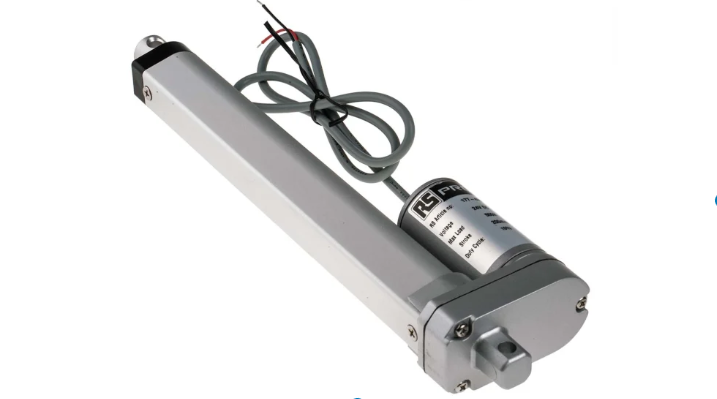What Are the Common Challenges with Linear Actuators and How to Overcome Them?
Linear actuators play a pivotal role in industrial automation, converting various forms of energy into linear motion, which is essential for many applications. These devices are critical in manufacturing, robotics, automotive, aerospace, and medical equipment, offering precision, control, and efficiency. Despite their widespread use and reliability, linear actuators can encounter several challenges that affect performance, longevity, and efficiency.
Common Challenges with Linear Actuators
While linear actuators are generally robust and reliable, they are not immune to issues arising due to environmental factors, poor maintenance, or incorrect application. Here are some of the most common challenges users face:
- Wear and Tear
Continuous operation, exposure to harsh conditions, or handling heavy loads can lead to the deterioration of internal components such as gears, bearings, and motors. This gradual degradation can result in reduced performance, increased noise, or even complete actuator failure.
Solution: Regular maintenance and monitoring are crucial to mitigating wear and tear. Lubricating moving parts and conducting periodic inspections will help identify early signs of deterioration. If actuators operate in extreme environments, choosing actuators designed for durability, such as those provided by ETI Systems, can help extend operational life. Additionally, understanding the actuator’s load and duty cycle capacity is essential to prevent device overworking.
- Overheating
Another challenge with linear actuators, particularly electric ones, is the potential for overheating. Actuators are often tasked with heavy loads or extended-duty cycles that can cause the motor or other electrical components to overheat.
Solution: To prevent overheating, the actuator must be sized correctly for the application. Actuators should operate within their rated load and duty cycle specifications. Thermal protection features, such as built-in temperature sensors or automatic shut-off mechanisms, can help prevent damage due to overheating.
- Backlash and Reduced Precision
Backlash refers to the slight movement or play in mechanical systems when the direction of motion is reversed. In linear actuators, backlash can occur between the gears or in the lead screw mechanism, leading to reduced accuracy and precision.
Solution: To minimize backlash, opt for actuators that are designed with precision in mind, such as ball screw actuators or those with anti-backlash mechanisms. Regularly inspecting and maintaining the actuator’s components, such as tightening loose fittings and ensuring the lead screw is aligned correctly, can reduce the risk of backlash. Additionally, upgrading to higher-quality actuators from trusted manufacturers like ETI Systems can provide the precision required for applications where accuracy is critical.
- Environmental Factors
Harsh environmental conditions can pose significant challenges for linear actuators. Dust, moisture, extreme temperatures, and exposure to corrosive chemicals can lead to actuator degradation, reduce performance, and ultimately cause failure. For instance, moisture can lead to rust and corrosion, while excessive dust can clog the actuator’s moving parts.
Solution: For applications in harsh environments, selecting actuators with appropriate protective ratings, such as IP (Ingress Protection) ratings, is essential. Actuators with higher IP ratings offer better protection against dust and moisture. Coating materials, such as stainless steel or anodized aluminum, protect against corrosion.
- Power Supply Issues
Electric linear actuators rely on a consistent and stable power supply to operate efficiently. Power fluctuations, under-voltage, or over-voltage conditions can affect the actuator’s performance and, in some cases, cause the motor to burn out. Power supply issues can also lead to inconsistent operation, particularly in systems with complex control circuits.
Solution: Ensuring a stable and well-regulated power source is critical for the smooth operation of electric linear actuators. Power surge protectors or voltage regulators can safeguard the actuators against power fluctuations. When actuators are exposed to power issues, they should choose actuators with built-in power protection features, such as current limiters or over-voltage protection, available through distributors like Digikey.
- Insufficient Load Capacity
One of the most common causes of actuator failure is overloading—using an actuator for tasks beyond its rated load capacity. Overloading an actuator can cause strain on the motor, lead screw, and bearings, leading to premature failure. Additionally, overloading may result in erratic operation, reduced speed, and incomplete actuation.
Solution: The key to preventing overload is selecting an actuator with the appropriate load capacity for the specific application. When choosing an actuator, it is essential to understand the maximum load requirements and factor in safety margins. High-performance actuators, such as those offered by ETI Systems, should be considered for applications involving heavy loads. Using sensors to monitor the load during operation can also help prevent overload and ensure the actuator operates within its limits.
Conclusion
While linear actuators are integral components in many industries, various challenges can affect their performance, longevity, and precision. Common issues such as wear and tear, overheating, backlash, environmental factors, and power supply fluctuations can all hinder actuator performance. However, many of these challenges can be overcome by implementing proper maintenance, selecting the suitable actuator for the application, and ensuring correct installation.
Stay in touch to get more news & updates on Buzz Released!






